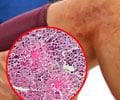Spacers and nebulizers-- two treatment methods for asthma attacks are found to be equal in staving off hospital admissions, a new review shows.
Spacers and nebulizers-- two treatment methods for asthma attacks are found to be equal in staving off hospital admissions, a new review shows. Spacer plays shorter stays in emergency departments usually for children.
The review authors, led by Christopher Cates, M.D., of the University of Alberta, in Edmonton, Canada, analyzed information from 25 studies of 2,066 children ages 2 years and older, and 614 adults with asthma. All used either spacers or nebulizers to deliver beta-2 agonists, medications that help ‘open’ the lungs to ease breathing in asthma attacks.The review appears in the current issue of The Cochrane Library, a publication of The Cochrane Collaboration, an international organization that evaluates medical research. Systematic reviews draw evidence-based conclusions about medical practice after considering both the content and quality of existing medical trials on a topic.
A spacer is a holding chamber attached to devices for inhaling asthma medication. A nebulizer is an electrically powered machine that turns liquid medication into a mist breathed directly into the lungs through a face mask or mouthpiece. Nebulizers are the traditional method for treating asthma attacks, and are still used more often in hospitals.
The authors found that spacers and nebulizers work equally well for treating non–life-threatening asthma attacks, in terms of need for inpatient admission and the number of days in the hospital.
However, emergency room visits were almost one half-hour shorter for children who took their medication by spacers, and these children experienced fewer side effects, lower pulse rates and better oxygen delivery.
These advantages, along with ‘greater ease of use of spacers, together with hospital admission rates with spacers that are at best 60 percent lower than nebulizers and at worst 6 percent higher’ make the newer treatment ‘the recommended option for children,’ Cates said. He added that ‘nebulizers need a power supply, are less portable, require maintenance and are more difficult to clean than spacers.’
Advertisement
The authors conclude that the emergency- room results need to be replicated in a community setting. In the meantime, Cates said, the issue is ‘how to help people change practice from the familiar nebulization to using a spacer.’ He said that proper titration -- adjusting medication dose and timing according to symptoms -- is still ‘the key issue, whichever delivery method is used.’ An estimated 6.2 million U.S. children under age 18 years of age have asthma and 4 million of these had an asthma attack or episode in 2003, according to the American Lung Association. Asthma is the third leading cause of hospitalization in children under 15.
Source: Eurekalert











